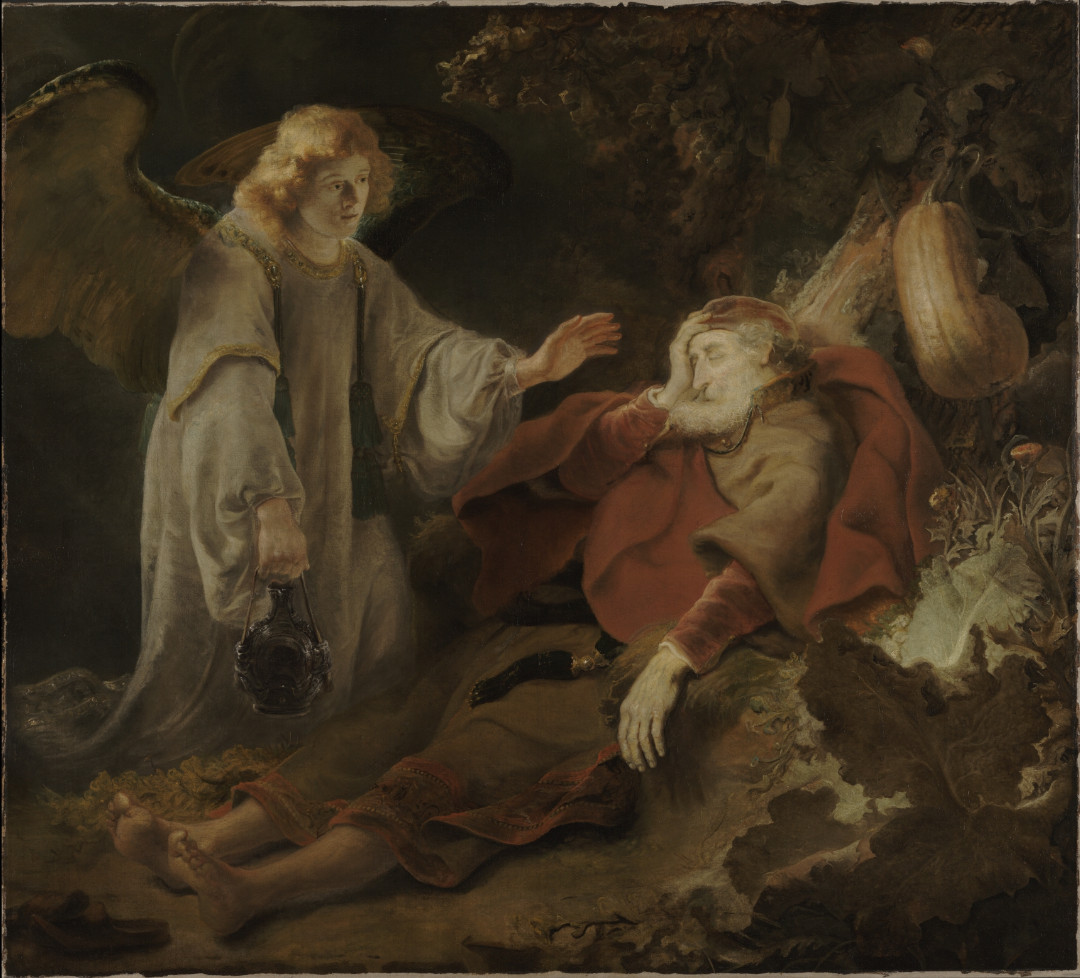The Angel Appears to Elijah by Ferdinand Bol, 1 Kings 19:1-9, Bible.Gallery
Artwork Description

This extremely powerful and well-preserved painting, which was unknown until 2007 when it appeared at auction, is a prime example of Ferdinand Bol’s early biblical representations. Executed soon after his apprenticeship with Rembrandt van Rijn (1606–69), Angel Appearing to Elijah is boldly executed with a tonal color scheme that lends the composition great unity.
The painting depicts an episode from the Old Testament (I Kings 16:29–34 and chapters 17–19). In this complex and rather gory story, Ahab, the king of Israel (reigned ca. 874–53 BC), and his wife, Jezebel, reject the God of the Israelites and build an altar for the worshippers of Baal. The prophet Elijah then challenges the priests of Baal to set up a sacrificial altar to rival his own. When only Elijah’s sacrifice is consumed by fire, the people reject the false god, Baal, and turn again to the God of the Israelites. At Elijah’s instigation, the people then seize the prophets of Baal, and Elijah kills them. After Jezebel subsequently threatens to kill Elijah, the prophet flees into the wilderness where he sits under a juniper tree and prays for death before falling asleep. The moment that Bol depicts is when an angel comes to Elijah and says: “Arise and eat.” Elijah eats and drinks, but then he falls asleep again, whereupon the angel returns and exhorts him once more to get up and eat. Thus fortified, Elijah “went in the strength of that food forty days and forty nights unto Horeb the mount of God.”
In Bol’s painting the figures loom large in the picture plane. Elijah, lying under a tree, supports his head with his right hand and rests his left arm on the ground. In his lap is the end of the belt tied around his waist, a motif often seen in portrayals of biblical figures by, among others, Pieter Lastman (1583–1633) and Rembrandt.1 Behind Elijah hangs a gourd, while leaves and flowers fill the right foreground. The approaching angel looks at Elijah with slightly raised eyebrows as he prepares to waken the prophet with his raised left hand and provide him with water from the flask hanging from his right hand. Light falling onto Elijah’s face and hands and onto the hair of the angel lends plasticity to their forms and anchors them firmly in the darkened landscape surrounding them.